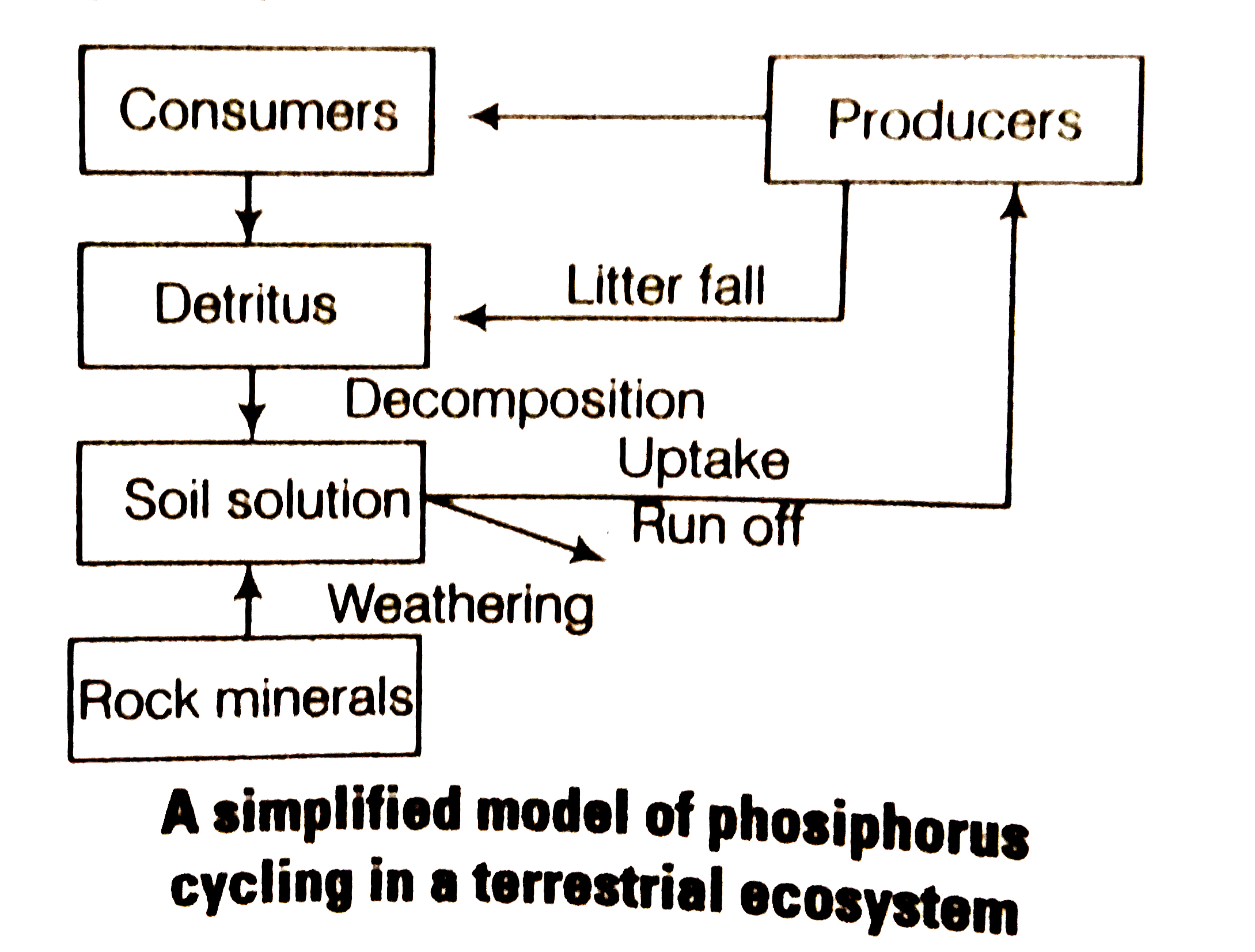What is a biogeochemical cycle. What is the role of the reservoir in a biogeochemical cycle? Give an example of a sedimentary cycle with reservoir located in earth's crust.
Video Solution
Text Solution
Biogeochemical Cycle
(i) The movement of nutrient elements through the various components of an ecosystem is called nutrient cycling or biogeochemical cycles (Bio-living, geo-including air, water and rocks).
(ii) Nutrient cycles are of two types
(a) Gaseous (b) Sedimentary
(iii) Atmosphere is the reservoir for gaseous type of nutrient cycle (e.g., nitrogen and carbon cycle).
(iv) Earth's crust is the reservoir of sedimentary cycle (e.g., sulphur and phosphorus cycle).
(v) The function of the reservoir is to meet with the deficit, which occurs due to imbalance in the rate of influx and efflux.
(vi) Environmental factors. e.g., soil. moisture. pH. temperature. etc., regulate the rate of release of nutrients into the atmosphere.
Phosphorus Cycle
Phosphorus cycle is an example of sedimentary nutrient cycle since. it moves from land and sedimented at the bottom of the seas. then back to land again.
The natural reservoir of phosphorus is earth's crust. Rock contains phosphorus in the form of phosphates. By weathering and soil erosion, phosphates enter streams. rivers and then to oceans.
With great movements of the crustal plates. sea floor is uplifted and phosphates become exposed on the drained land surfaces. From here, weathering over long periods of time releases phosphates.
From rocks. minute amount of these phosphates dissolve in soil and are absorbed by the roots of the plants.
Herbicores and other animals obtain this element from plants when they consume piants as their food.
The wastes products and tje dead organisms arre decimposed by phosphate- solubilising bacteria thus releasing phosphorus.

|
Updated on:21/07/2023
Topper's Solved these Questions
- BOOK - NCERT EXEMPLAR ENGLISHCHAPTER - ECOSYSTEMEXERCISE - Short Answer Type Question16videos
ECOSYSTEM
- BOOK - NCERT EXEMPLAR ENGLISHCHAPTER - BIOTECHNOLOGY PRINCIPLES AND PROCESSEXERCISE - All Questions44videos
BIOTECHNOLOGY PRINCIPLES AND PROCESS
- BOOK - NCERT EXEMPLAR ENGLISHCHAPTER - ENVIRONMENTAL ISSUES EXERCISE - Long Answer Type Questions7videos
ENVIRONMENTAL ISSUES
Similar Questions
Knowledge Check
- Question 1 - Select One
The reservoir for the gaseous type of biogeochemical cycle exists in
AstratosphereBatmosphereCionosphereDlithosphere. - Question 2 - Select One
Which one of the following is not a gaseous biogeochemical cycle in ecosystem?
AWater cycleBPhosphorus cycleCNitrogen cycleDCarbon cycle
Name two types of biogeochemical cycles.
View SolutionIn mineral cycle reservoir is
View SolutionWhich biogeochemical cycle is fully balanced?
View SolutionWhich one of the following is not a gaseous biogeochemical cycle in ecosystem?
View SolutionWhich one of the following is not a gaseous biogeochemical cycle in ecosystem?
View SolutionWhich one of the following is not a gaseous biogeochemical cycle in ecosystem?
View Solution

